© 2025 ALLCITY Network Inc.
All rights reserved.

By the early 1970s, Folsom Field had seen nearly half a century of football, and parts of the stadium were starting to show their age. The original wood bleachers from 1924 were still in place, and their structural integrity was becoming a concern. In the late 60s, Ralphie’s run was followed by the “Buffalo Stomp”, during which the fans would stampede their feet on the bleachers. It shook the stadium and made for an intimidating atmosphere, but it was a short-lived tradition because of the damage it did to the stands. The conversion to a concrete bowl couldn’t be put off much longer, but CU first had to deal with an even more pressing issue – the grass at Folsom.
When the entire playing surface was lowered in 1967, the field was re-sodded. Stadium groundskeeping has come a long way in the last half-century, but issues with new grass are still not unheard of, as we saw at Levi’s Stadium last decade. The new sod at Folsom was dealt a killing blow in September 1969, when an early snow storm hit Boulder the weekend the Buffs hosted Indiana. CU won in the mud, but the field never really recovered. AstroTurf, first installed in the Houston Astrodome in 1966, was sweeping the country at the time, and CU decided to give the Monsanto Corporation a call following the conclusion of the 1970 season. The new carpet cost roughly half a million dollars, and CU had to do a fundraiser to pay for it, but it was ready in time for the 1971 campaign.
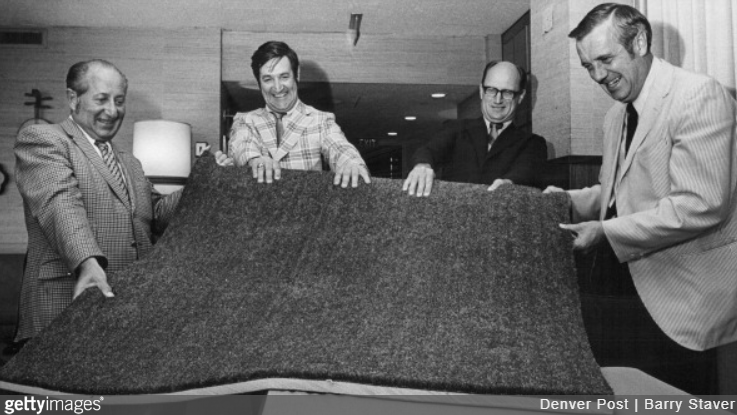
This was another downgrade to the stadium’s aesthetics, and the unnaturally bright green turf would unfortunately be the backdrop for the greatest teams in program history. That said, it proved its worth immediately when Boulder was hit with another early snow storm before the Buffs played Wyoming in the 1971 home opener. Fred Casotti speculated that the old field would have been impossible to play on, but the new rug was plowed and ready to go by Saturday. 1971 was also the debut of the now-iconic “COLORADO” letters in the south end zone, as the grass on the hill was paved over when the new turf was installed. Folsom wouldn’t see real grass again for more than 25 years.
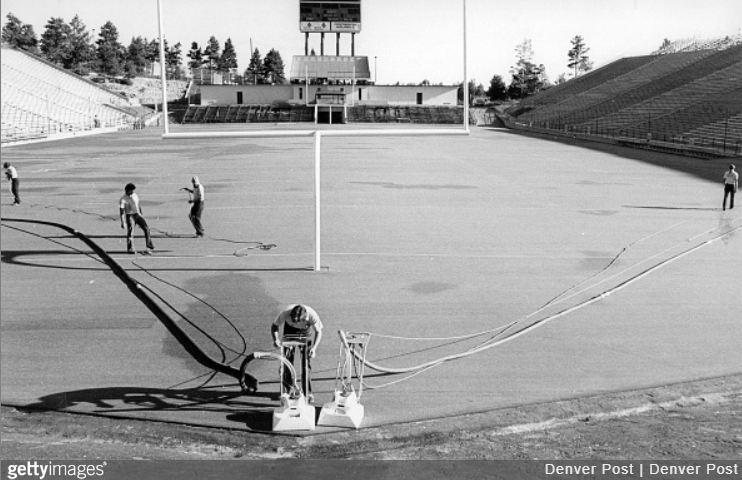
On the new track, speedy Cliff Branch and the Buffs rolled to an undefeated home record, and they also upset two top-ten teams on the road in non-conference play. Their only losses came against Nebraska and Oklahoma, and after a convincing Bluebonnet Bowl victory over Houston the Buffs finished with ten wins and ranked third in the country behind only their two Big 8 nemeses.
Following that historic season, CU entered 1972 ranked second in the nation, and hype in Boulder was at an all-time high. Season tickets sold out for the first time, and new permanent seating was built in the north end zone, replacing the previous temporary bleachers and increasing Folsom’s capacity by 1,265. This addition also added a section for the band on top of the team’s locker room building. It freed up more space in the bowl for fans, but it greatly decreased the band’s ability to be heard by most of the stadium. Eddie Crowder derisively called it the “Colorado Memorial Band Shell”.
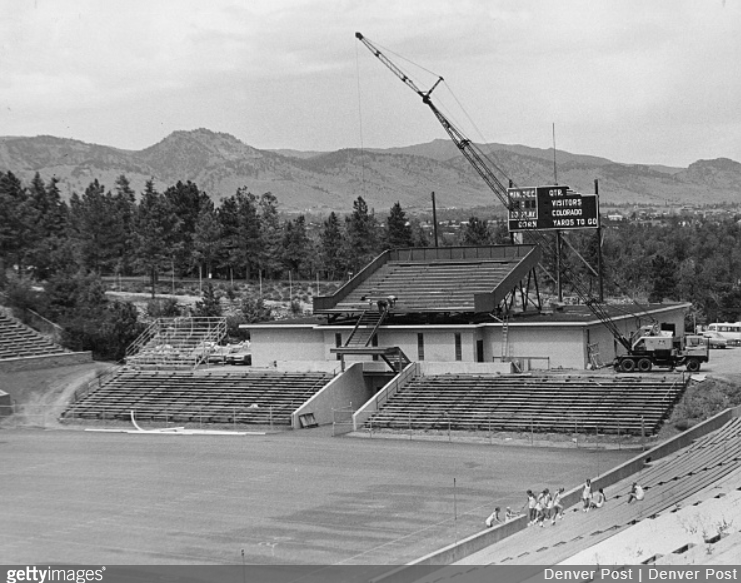
If the Buffs didn’t quite live up to the preseason hype, they still had a strong campaign in 1972; highlighted by a 20-14 victory over second-ranked Oklahoma in front of a national TV audience and a sellout crowd of 52,022; the largest to witness any sporting event in Colorado at the time.
Crowder resigned to focus on his role as athletic director after a lackluster 1973 season, and he hired Bill Mallory to replace him. Under his leadership, the Buffs returned to form, and the mid-1970s were a prosperous time for the program, even if they could never get past Nebraska. With ever larger crowds straining Folsom’s aging structure, it was time to build a new foundation.
1976 was a bad year for the rats who had taken up residence under Folsom’s bleachers. After 52 years, the entire lower bowl was finally paved. Alternating sections of silver and gold aluminum took the place of California redwood, and they are still one of Folsom’s most recognizable features today. The one notable casualty of the new seating bowl was the last remaining section of the beautiful 1940 sandstone wall in the south end zone. At the time of writing there are far more pressing needs for the stadium, but that’s a feature that should never have been taken away and I’d love to see it come back someday.
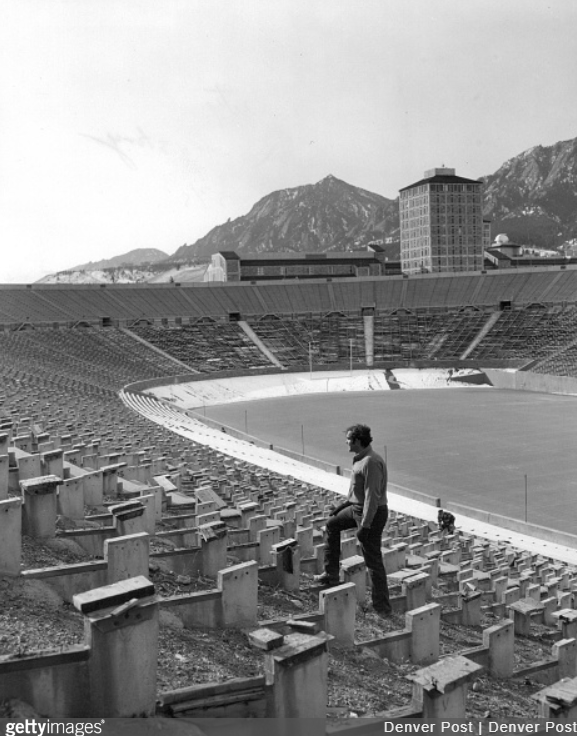
Folsom’s scoreboard got a much-needed upgrade in 1976 as well. The new board was several times larger than the 1952 board it replaced, and it could show text on a large banner at the top. One CU alum was concerned that the ability to display the lyrics to the school’s alma mater would lead to the end of the time-honored tradition of no one knowing the words. Based on the more than 100 CU football and basketball games I’ve attended, he had nothing to worry about.
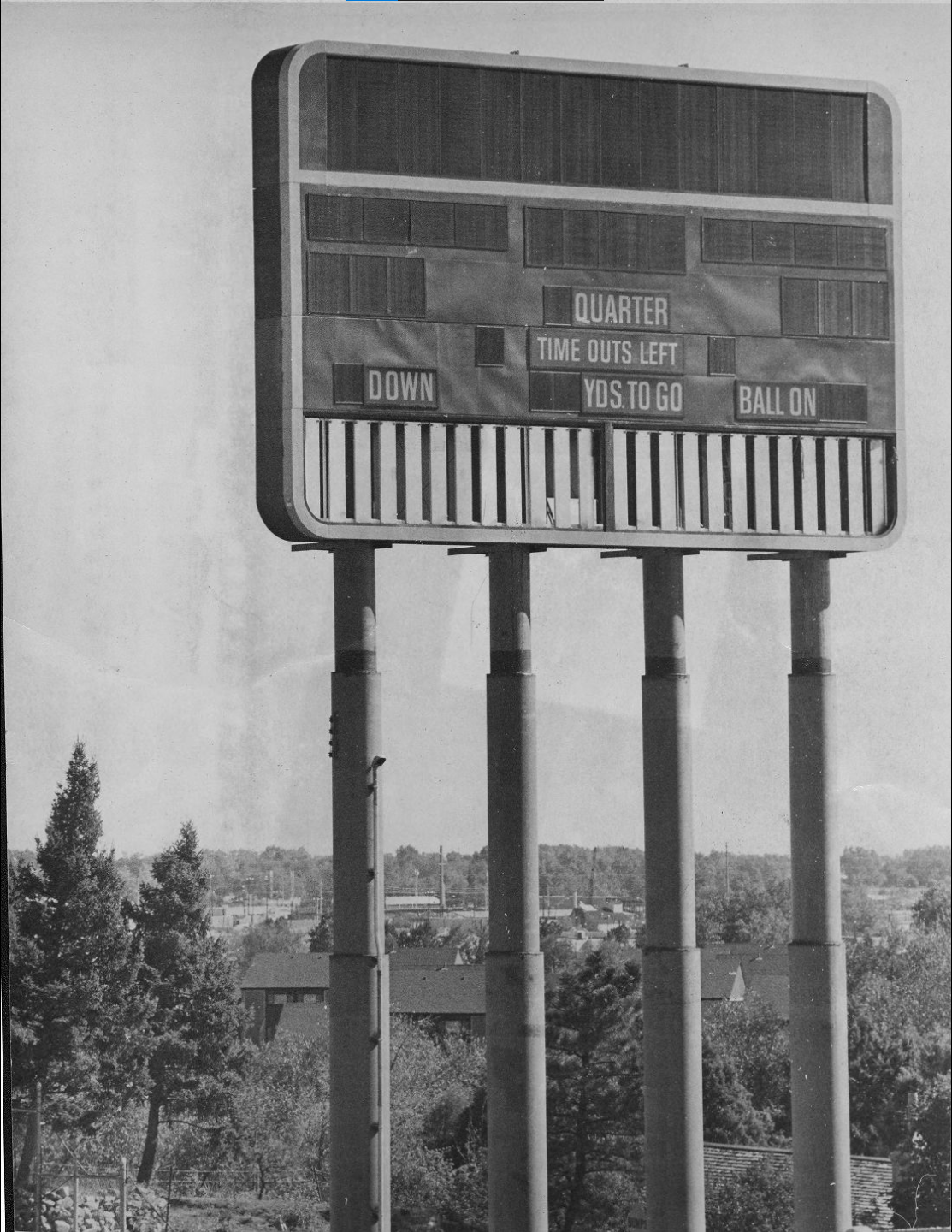
1976 was yet another chapter in the “if you improve Folsom, the Buffs will win” saga. CU finished in a tie for first in the Big 8 and earned its third Orange Bowl bid thanks to a 42-31 victory over Oklahoma at Folsom, which served as the tiebreaker when both teams finished with 5-2 conference records.
The following year saw the largest crowd in Folsom Field’s history, but it wasn’t for a football game. 61,981 people jammed the stadium on May 1, 1977 for a concert featuring Fleetwood Mac and Bob Seger. Folsom hosted some of the biggest names in music during the 1970s and 80s, beginning just a few weeks after Woodstock in September of 1969 with a concert featuring The Byrds and the Steve Miller Band (it wouldn’t surprise me if this helped to kill the natural grass field.)
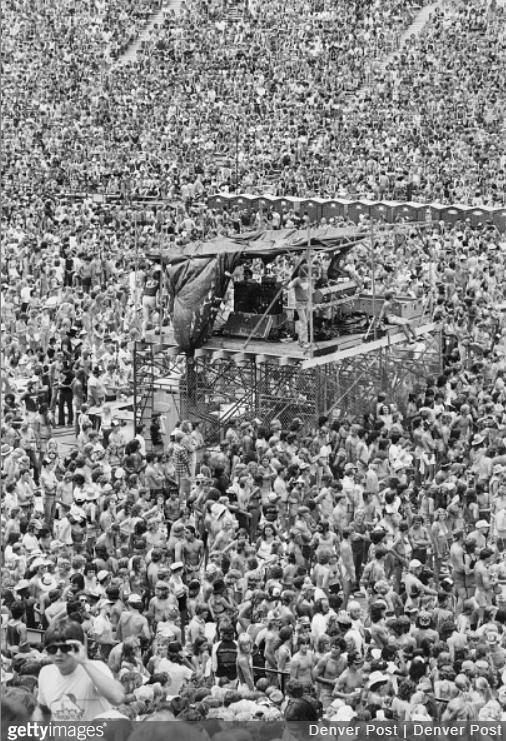
Folsom’s peak as a concert venue came in the late 1970s when legendary Denver promoter Barry Fey put on several festival-like daytime concerts each summer featuring stacked lineups with multiple famous artists. There are truly too many legends to list, so I invite you to check out the full list of Folsom’s concerts from the CU media guide. It’s worth pointing out that the Grateful Dead made several trips to Folsom during this period, and decades later they would be the ones to finally revive its long-dormant concert tradition.
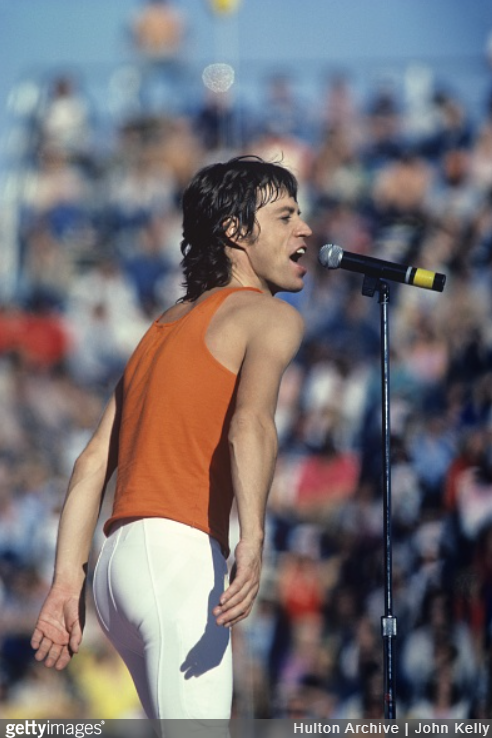
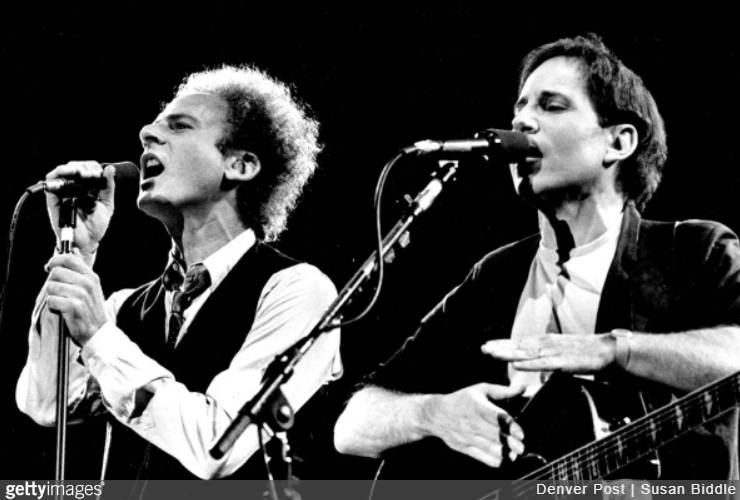
After new astroturf was installed before the 1977 season, Folsom entered into one of the more stable periods of its evolution as a stadium. But the football played within its walls was anything but steady.
Consecutive 5-0 starts in 1977 and 1978 turned into disappointing finishes, and Bill Mallory was fired. I could fill another chapter with the debacle that followed, but the short version is that CU bet the house on former Oklahoma coach Chuck Fairbanks, and it was a disaster. The only memorable games of his tenure were his debut against Oregon, which was the first football game ever televised by ESPN, and a 1980 defeat to his old school which saw the Buffs score 42 points and still lose by 40.
Fairbanks deserved to be fired, but instead he resigned shortly before the 1982 season and left CU in a lurch. It ended up being the best thing that could have happened, because it led to the hiring of Bill McCartney. The wisdom of this decision wouldn’t become apparent for a few years though, and 1979-1984 was the worst period in CU history to that point. In fact, you could say the only positive exposure CU got during this era was Folsom Field’s appearance in the opening credits of the hit Robin Williams sitcom Mork & Mindy, which was set in Boulder and aired from 1978-1982.
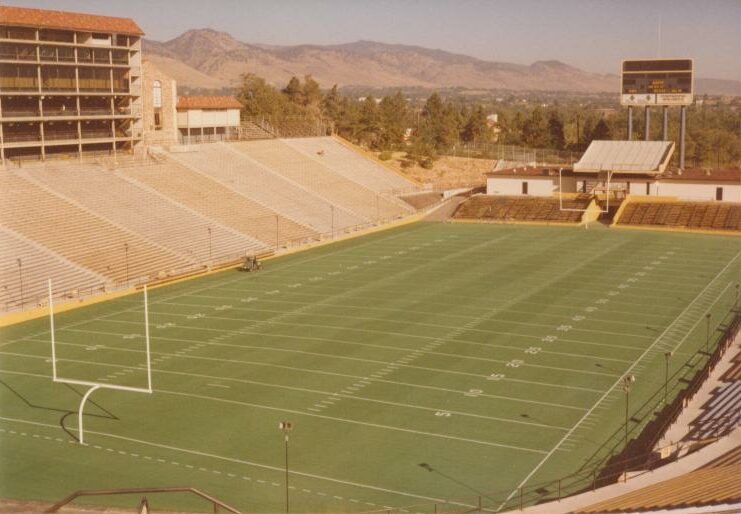
Compounding the embarrassing results on the field, the CU regents decided to change the uniforms for every sport from black to powder blue. This made the football team look like a cheap UCLA imitation, especially when they were getting demolished by the Bruins in 1982 and 1983. The “COLORADO” pavement in the south end zone was even repainted blue; a change that was thankfully undone when the uniforms switched back to black.
The south end zone also got its own scoreboard before the 1984 season. Its light bulbs would display many famous final scores over the next quarter of a century, but in its first season it mostly read VISITORS: A Lot – COLORADO: Not Much. Even McCartney’s surprise decision to return to black jerseys for the Nebraska and Oklahoma games that season didn’t help. Many questioned whether he was the right man to turn things around.
In the summer of 1985 The CU AD created controversy when they denied Bruce Springsteen the opportunity to play a late August concert at Folsom because the football team was preparing for the season and “didn’t need the distraction”. This put a lot of pressure on the Buffs (who were coming off a 1-10 season) to justify denying Boulder a chance to see one of the hottest concert acts in the world. Fortunately, they were up to the task.
It started with a thrilling goal line stand against Oregon in week two on an emotional day that saw the return to Folsom of former CU tight end Ed Reinhardt, who had suffered a debilitating brain injury against the Ducks in Eugene the year prior. Wearing their iconic black uniforms permanently once more, the Buffs won seven games and went bowling for the first time in nine years, justifying Eddie Crowder’s faith in McCartney despite a 7-26 record in his first three seasons.
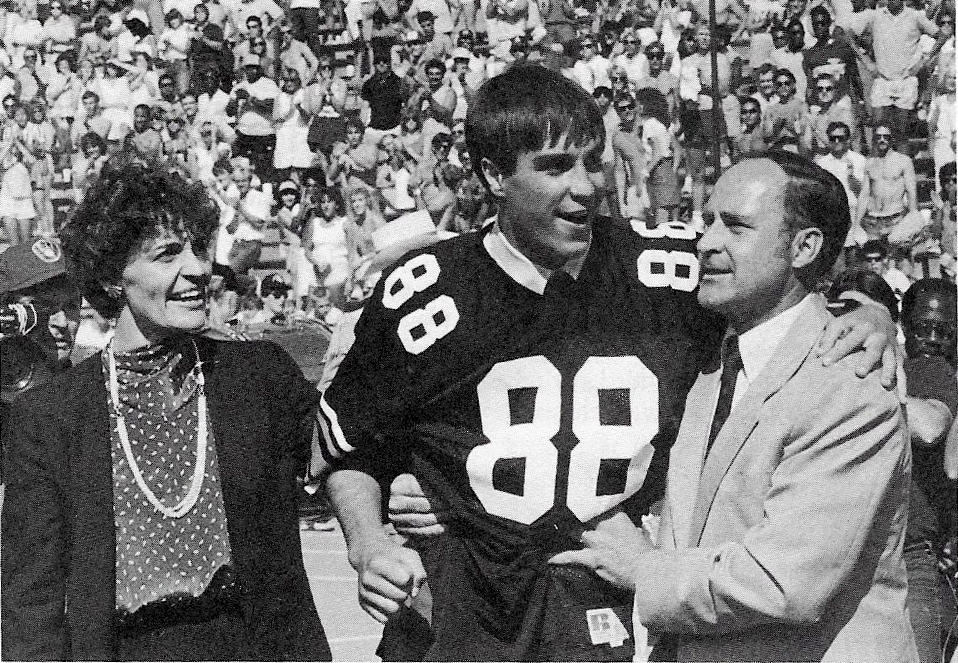
The 1986 campaign got off to a disastrous start when CU went 0-4 in non-conference play, but the Buffs rebounded with a 6-1 Big 8 record, including the defining win of McCartney’s tenure to that point. On October 20, third-ranked Nebraska came to town and CU shocked the Huskers 20-10 for their first win over Big Red since 1967 and first at home since 1960. It was a moment of triumph and vindication for McCartney, who had made defeating Nebraska a priority since his arrival in Boulder, but it was only a preview of what was to come.
NEXT TIME: night games, a new athletic center, natural grass returns, and the best football teams Folsom has ever seen.
Folsom’s 25 Greatest Games nominees from this chapter:
- November 13, 1971: CU running back Charlie Davis sets a Big 8 record with 342 rushing yards as the 12th ranked Buffs throttle Oklahoma State 40-6 on their way to the first 10-win season in program history and a #3 final ranking
- October 21, 1972: 9th ranked CU upsets #2 Oklahoma 20-14 in front of a record crowd and an ABC national TV audience
- October 27, 1973: the Buffs take down 7th ranked Missouri 17-13
- September 28, 1974: after opening the season with two road losses against top-10 teams, Bill Mallory gets his first win as coach of the Buffaloes in his first home game. CU edges out #11 Wisconsin 24-21
- October 18, 1975: 12th ranked CU gets the better of #10 Missouri 31-20
- October 30, 1976: one week after routing #16 Iowa State, the now-19th-ranked Buffs defeat #13 Oklahoma in a 42-31 shootout. The win clinches CU’s Big 8 title when they finish the season in a tie with the Sooners and Oklahoma State (who CU also defeated)
- October 8, 1977: #6 CU defeats Oklahoma State 29-13 to improve to 5-0 on the season and #3 in the country. This will be the high water mark for Eddie Crowder and the program before a long dark period
- September 14, 1985: in a victory Bill McCartney cited as a turning point for the program, CU defeats Oregon 21-17 on a last-second sack by linebacker Mickey Pruitt. It improves CU to 2-0 one year after a 1-10 season, and helps propel them to their first bowl game in nine years
- October 25, 1986: CU 20, #3 Nebraska 10. The “we here” moment of the Bill McCartney era
Comments
Share your thoughts
Join the conversation




